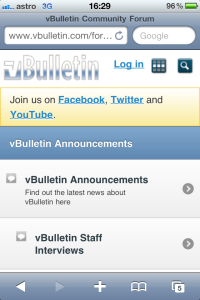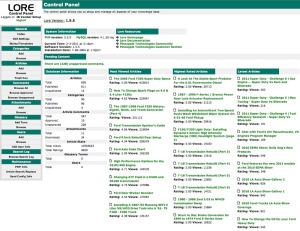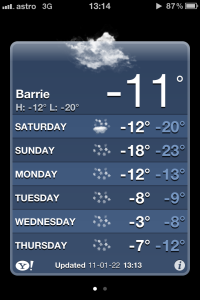Hello there,
There is a pertinent story about a man who was working on an oil platform in the North Sea. He woke up one night from a loud explosion, which suddenly set his entire oil platform on fire. In mere moments, he was surrounded by flames. Through the smoke and heat, he barely made his way out of the chaos to the platform’s edge. When he looked down over the edge, all he could see were the dark, cold, foreboding Atlantic waters. As the fire approached him, the man had mere seconds to react. He could stand on the platform, and inevitably be consumed by the burning flames. Or, he could plunge 30 meters in to the freezing waters. The man was standing upon a “burning platform,” and he needed to make a choice. He decided to jump. It was unexpected. In ordinary circumstances, the man would never consider plunging into icy waters. But these were not ordinary times – his platform was on fire. The man survived the fall and the waters. After he was rescued, he noted that a “burning platform” caused a radical change in his behaviour. We too, are standing on a “burning platform,” and we must decide how we are going to change our behaviour. Over the past few months, I’ve shared with you what I’ve heard from our shareholders, operators, developers, suppliers and from you. Today, I’m going to share what I’ve learned and what I have come to believe. I have learned that we are standing on a burning platform. And, we have more than one explosion – we have multiple points of scorching heat that are fuelling a blazing fire around us. For example, there is intense heat coming from our competitors, more rapidly than we ever expected. Apple disrupted the market by redefining the smartphone and attracting developers to a closed, but very powerful ecosystem. In 2008, Apple’s market share in the $300+ price range was 25 percent; by 2010 it escalated to 61 percent. They are enjoying a tremendous growth trajectory with a 78 percent earnings growth year over year in Q4 2010. Apple demonstrated that if designed well, consumers would buy a high-priced phone with a great experience and developers would build applications. They changed the game, and today, Apple owns the high-end range. And then, there is Android. In about two years, Android created a platform that attracts application developers, service providers and hardware manufacturers. Android came in at the high-end, they are now winning the mid-range, and quickly they are going downstream to phones under €100. Google has become a gravitational force, drawing much of the industry’s innovation to its core. Let’s not forget about the low-end price range. In 2008, MediaTek supplied complete reference designs for phone chipsets, which enabled manufacturers in the Shenzhen region of China to produce phones at an unbelievable pace. By some accounts, this ecosystem now produces more than one third of the phones sold globally – taking share from us in emerging markets. While competitors poured flames on our market share, what happened at Nokia? We fell behind, we missed big trends, and we lost time. At that time, we thought we were making the right decisions; but, with the benefit of hindsight, we now find ourselves years behind. The first iPhone shipped in 2007, and we still don’t have a product that is close to their experience. Android came on the scene just over 2 years ago, and this week they took our leadership position in smartphone volumes. Unbelievable. We have some brilliant sources of innovation inside Nokia, but we are not bringing it to market fast enough. We thought MeeGo would be a platform for winning high-end smartphones. However, at this rate, by the end of 2011, we might have only one MeeGo product in the market. At the midrange, we have Symbian. It has proven to be non-competitive in leading markets like North America. Additionally, Symbian is proving to be an increasingly difficult environment in which to develop to meet the continuously expanding consumer requirements, leading to slowness in product development and also creating a disadvantage when we seek to take advantage of new hardware platforms. As a result, if we continue like before, we will get further and further behind, while our competitors advance further and further ahead. At the lower-end price range, Chinese OEMs are cranking out a device much faster than, as one Nokia employee said only partially in jest, “the time that it takes us to polish a PowerPoint presentation.” They are fast, they are cheap, and they are challenging us. And the truly perplexing aspect is that we’re not even fighting with the right weapons. We are still too often trying to approach each price range on a device-to-device basis. The battle of devices has now become a war of ecosystems, where ecosystems include not only the hardware and software of the device, but developers, applications, ecommerce, advertising, search, social applications, location-based services, unified communications and many other things. Our competitors aren’t taking our market share with devices; they are taking our market share with an entire ecosystem. This means we’re going to have to decide how we either build, catalyse or join an ecosystem. This is one of the decisions we need to make. In the meantime, we’ve lost market share, we’ve lost mind share and we’ve lost time. On Tuesday, Standard & Poor’s informed that they will put our A long term and A-1 short term ratings on negative credit watch. This is a similar rating action to the one that Moody’s took last week. Basically it means that during the next few weeks they will make an analysis of Nokia, and decide on a possible credit rating downgrade. Why are these credit agencies contemplating these changes? Because they are concerned about our competitiveness. Consumer preference for Nokia declined worldwide. In the UK, our brand preference has slipped to 20 percent, which is 8 percent lower than last year. That means only 1 out of 5 people in the UK prefer Nokia to other brands. It’s also down in the other markets, which are traditionally our strongholds: Russia, Germany, Indonesia, UAE, and on and on and on. How did we get to this point? Why did we fall behind when the world around us evolved? This is what I have been trying to understand. I believe at least some of it has been due to our attitude inside Nokia. We poured gasoline on our own burning platform. I believe we have lacked accountability and leadership to align and direct the company through these disruptive times. We had a series of misses. We haven’t been delivering innovation fast enough. We’re not collaborating internally. Nokia, our platform is burning. We are working on a path forward — a path to rebuild our market leadership. When we share the new strategy on February 11, it will be a huge effort to transform our company. But, I believe that together, we can face the challenges ahead of us. Together, we can choose to define our future. The burning platform, upon which the man found himself, caused the man to shift his behaviour, and take a bold and brave step into an uncertain future. He was able to tell his story. Now, we have a great opportunity to do the same. Stephen.AMAZING infographic that shows what I & other Community Managers do
The Sleds!
996TT #Barrie #Winter style
New vbulletin 4.1.2 Mobile Skin! #vb #vbulletin
@brundle_fly it’s kind of intimidating.
11 Step Program for those thinking of having kids
by Amy Lawrence
Lesson 1
1. Go to the grocery store.
2. Arrange to have your salary paid directly to their head office.
3. Go home.
4. Pick up the paper.
5. Read it for the last time.
Lesson 2
Before you finally go ahead and have children, find a couple who already are parents and berate them about their…
1. Methods of discipline.
2. Lack of patience.
3. Appallingly low tolerance levels.
4. Allowing their children to run wild.
5. Suggest ways in which they might improve their child’s breastfeeding, sleep habits, toilet training, table manners, and overall behavior.
Enjoy it because it will be the last time in your life you will have all the answers.
Lesson 3
A really good way to discover how the nights might feel…
1. Get home from work and immediately begin walking around the living room from 5PM to 10PM carrying a wet bag weighing approximately 8-12 pounds, with a radio turned to static (or some other obnoxious sound) playing loudly. (Eat cold food with one hand for dinner)
2. At 10PM, put the bag gently down, set the alarm for midnight, and go to sleep.
3. Get up at 12 and walk around the living room again, with the bag, until 1AM.
4. Set the alarm for 3AM.
5. As you can’t get back to sleep, get up at 2AM and make a drink and watch an infomercial.
6. Go to bed at 2:45AM.
7. Get up at 3AM when the alarm goes off.
8. Sing songs quietly in the dark until 4AM.
9. Get up. Make breakfast. Get ready for work and go to work (work hard and be productive)
Repeat steps 1-9 each night. Keep this up for 3-5 years. Look cheerful and together.
Lesson 4
Can you stand the mess children make? T o find out…
1. Smear peanut butter onto the sofa and jam onto the curtains.
2. Hide a piece of raw chicken behind the stereo and leave it there all summer.
3. Stick your fingers in the flower bed.
4. Then rub them on the clean walls.
5. Take your favorite book, photo album, etc. Wreck it.
6. Spill milk on your new pillows. Cover the stains with crayons. How does that look?
Lesson 5
Dressing small children is not as easy as it seems.
1. Buy an octopus and a small bag made out of loose mesh.
2. Attempt to put the octopus into the bag so that none of the arms hang out.
Time allowed for this – all morning.
Lesson 6
Forget the BMW and buy a mini-van. And don’t think that you can leave it out in the driveway spotless and shining. Family cars don’t look like that.
1. Buy a chocolate ice cream cone and put it in the glove compartment.
Leave it there.
2. Get a dime. Stick it in the CD player.
3. Take a family size package of chocolate cookies. Mash them into the back seat. Sprinkle cheerios all over the floor, then smash them with your foot.
4. Run a garden rake along both sides of the car.
Lesson 7
Go to the local grocery store. Take with you the closest thing you can find to a pre-school child. (A full-grown goat is an excellent choice). If you intend to have more than one child, then definitely take more than one goat. Buy your week’s groceries without letting the goats out of your sight. Pay for everything the goat eats or destroys. Until you can easily accomplish this, do not even contemplate having children.
Lesson 8
1. Hollow out a melon.
2. Make a small hole in the side.
3. Suspend it from the ceiling and swing it from side to side.
4. Now get a bowl of soggy Cheerios and attempt to spoon them into the swaying melon by pretending to be an airplane.
5. Continue until half the Cheerios are gone.
6. Tip half into your lap. The other half, just throw up in the air.
You are now ready to feed a nine- month-old baby.
Lesson 9
Learn the names of every character from Sesame Street , Barney, Disney, the Teletubbies, and Pokemon. Watch nothing else on TV but PBS, the Disney channel or Noggin for at least five years. (I know, you’re thinking What’s ‘Noggin’?) Exactly the point.
Lesson 10
Make a recording of Fran Drescher saying ‘mommy’ repeatedly. (Important: no more than a four second delay between each ‘mommy’; occasional crescendo to the level of a supersonic jet is required). Play this tape in your car everywhere you go for the next four years. You are now ready to take a long trip with a toddler.
Lesson 11
Start talking to an adult of your choice. Have someone else continually tug on your skirt hem, shirt- sleeve, or elbow while playing the ‘mommy’ tape made from Lesson 10 above. You are now ready to have a conversation with an adult while there is a child in the room.
This is all very tongue in cheek; anyone who is parent will say ‘it’s all worth it!’ Share it with your friends, both those who do and don’t have kids. I guarantee they’ll get a chuckle out of it. Remember, a sense of humor is one of the most important things you’ll need when you become a parent!









